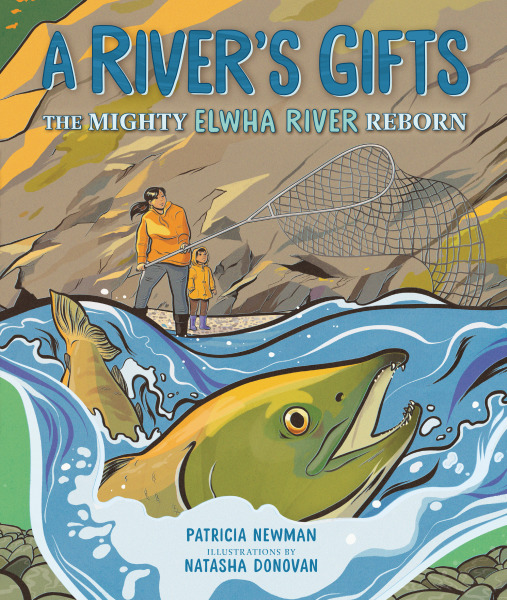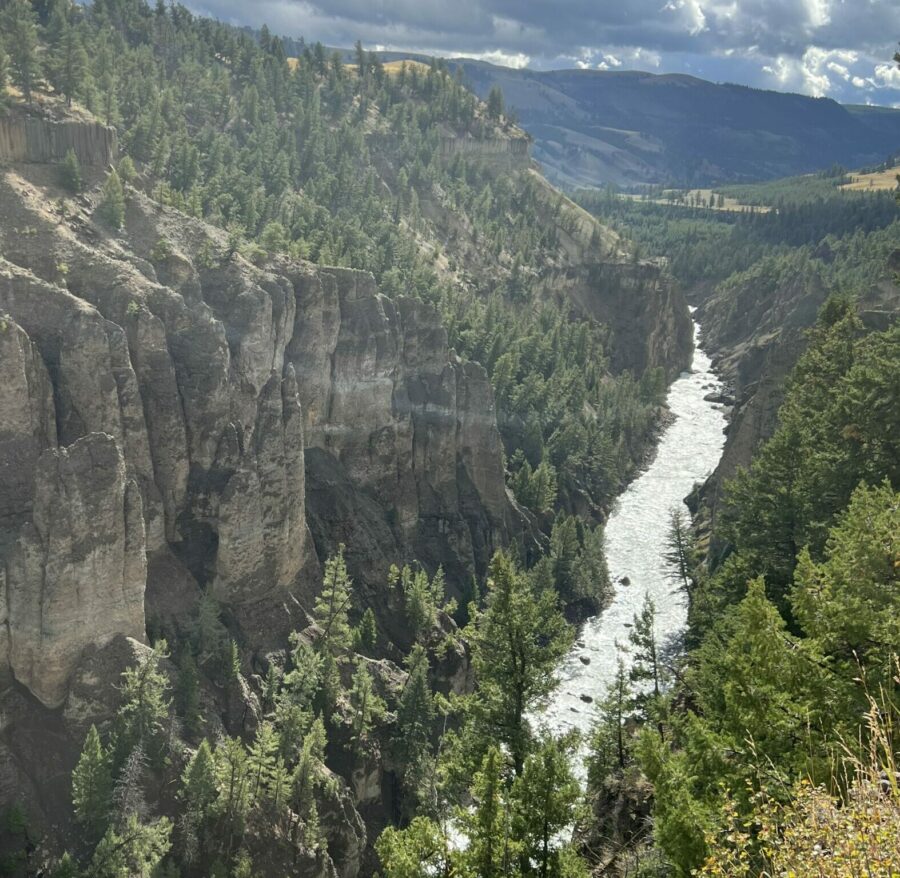BY PATRICIA NEWMAN
We all live in a river basin – the area of land drained by a river and its tributaries. But what do you and your students know about your river basin? Read on the find out how you can explore it.
What’s so important about rivers anyway?
Rivers have nourished our planet for centuries, flowing through our history, our lives, and our livelihoods. They connect us, provide the water we drink, water our crops, control flooding, and nourish wildlife.

curriculum guide for A RIVER’S GIFTS
To begin this lesson, read A River’s Gifts: The Mighty Elwha River Reborn. Use the following questions as a springboard for discussion:
- How did the Elwha River support the salmon, the forest, and the Strong People long ago?
- Why was a dam built on the Elwha River?
- Explain how a dam works.
- What happened to the river when the Elwha and Glines Canyon Dams were built? Why?
- How did the dams affect the Strong People and the wildlife that needed the river?
- Is there a benefit to a free-flowing river? Why or why not?
Who lives in our local river habitat?
Now, extend some of the students’ new river knowledge to their own river basin.
Objective
Students will identify rivers in their state, county, or province; research the various kinds of animals and plants living in or near the rivers; write short summaries about the animal and plant life in or near the rivers; draw pictures of the animal and plant life in or near the rivers; and compile the information and present in book format.

MATERIALS
- Student notebook
- Teacher-selected and/or student-researched books, newspapers, and online sources about local rivers
- Local map
- Cconstruction paper of various colors or tag board
- Drawing paper
- Scissors
- Glue or paste
- Hole punch and binder rings or clear plastic report covers and report clamps
- Computer(s) with Internet access and/or word processing program and printer (optional)
VOCABULARY
- animal
- aquatic
- book
- plant
- river
- specific wildlife names native to your local river
Procedure
- Identify some rivers in your area. Depending on your location, you may decide to identify rivers by city, town, county, province, or state.
- Choose one or two rivers. Organize students into small groups. Tell students that half the groups will research information about animal life in or near the river(s); the other half will research information about plant life in or near the river(s). Tell students that they will use the information they find to create a class book about the animal and plant life in or near the river(s).
- Have the class use school, library, or online sources to research the information. If images of animal and plant life are not available, students might draw pictures.
- Have students write one-page summaries about each type of plant and animal life they study. Let students draw the pictures on drawing paper.
- Have students cut and paste pictures and summaries onto construction paper. Compile the pages into book format. Hold the pages together, using a hole punch and binder rings or clear plastic report covers and report clamps. Keep the book in your classroom library.
- Variations:
- Idea 1: For younger students: Have students create a picture book about the animal and plant life in or near local rivers.
- Idea 2: Have students create the summaries using a word processing program and print the pages on a printer.
- Idea 3: Have students create the pictures with KidPix or another drawing program
Adapted from Education World’s Local River Life lesson




!["Aliens"-by-[Søren]-is-licensed-under-CC-BY-NC-ND-2.0.](https://dnhna1f30c1xr.cloudfront.net/wp-content/uploads/2025/07/373470957_23bb4374ae-300x200.jpg)




Leave a Reply
Your email is safe with me.